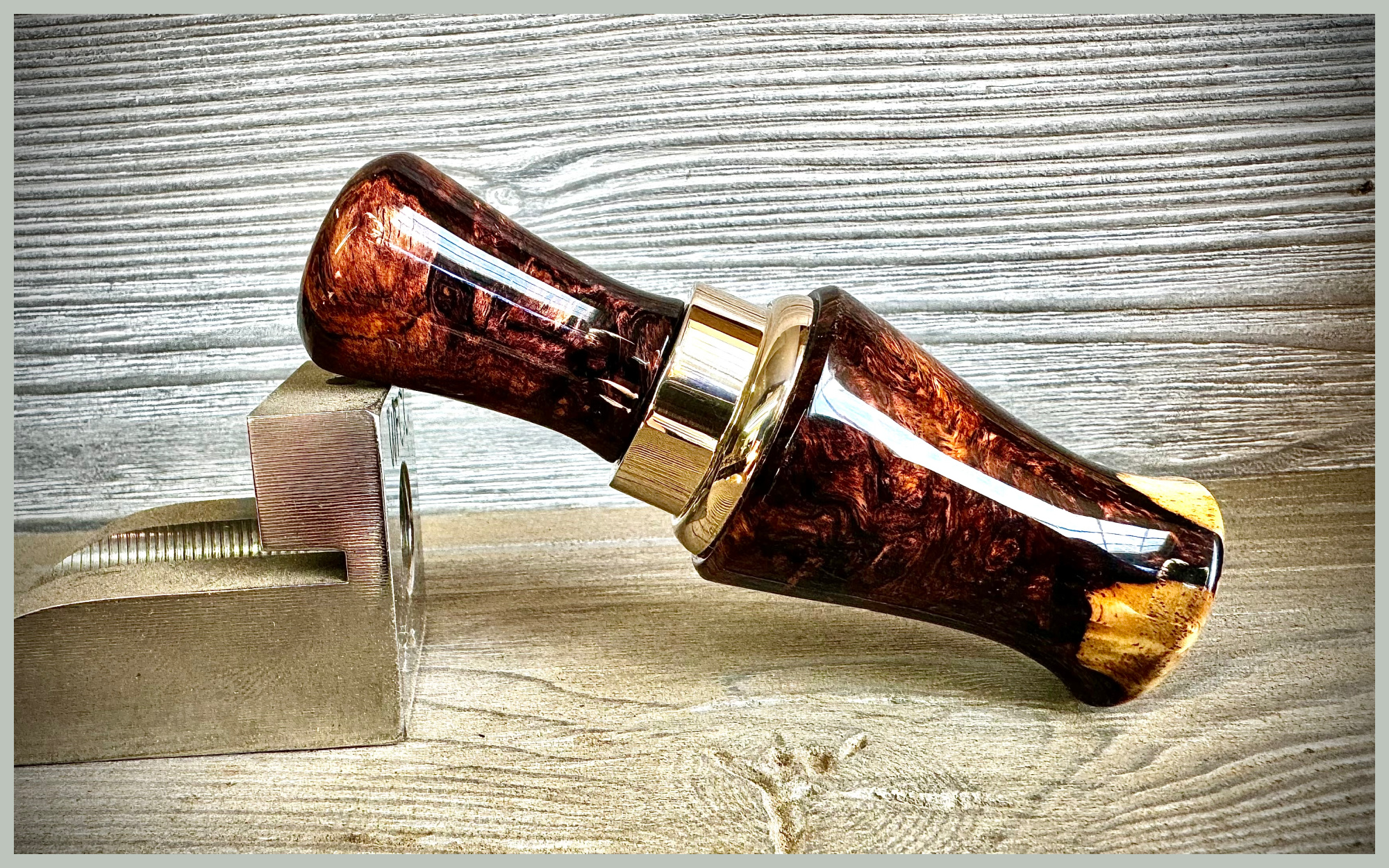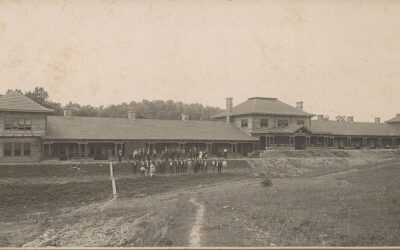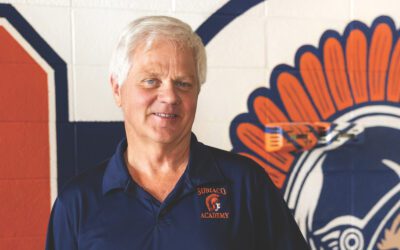When Will Shelley was born, his hometown of Colcord, Oklahoma, housed approximately 530 residents, and most local kids grew up hunting. The Shelleys were no exception. Will hunted as soon as he was able, and on those early trips to the woods, he bonded with the older members of his extended family. He also helped bring home meat that filled their freezers.
While deer hunting was paramount, his attention turned to duck hunting when he was twelve or thirteen. “I’d take my cousin, Jake, with me,” Will says. “He was four years younger than me. We’d ride four-wheelers, but we always stayed on the family land. We didn’t know what we were doing. We’d be at the pond, watching the ducks work. We’d have two duck decoys that we’d picked up in Grandpa’s barn. They wouldn’t even float.”
There was something about duck hunting. It operated at a different pace. “You don’t have to be quiet, like when you’re deer hunting. You’re hanging out with your buddies. You have to read the wind. The weather has to be just right. You have to have the right setup. It’s just a whole different experience.” And since it wasn’t the main form of hunting his family did, it seemed to belong to Will alone.
One of the keys to duck hunting is having an effective call to lure the birds in. Dedicated hunters will spend hundreds, if not thousands, for the right device. Many are commercially manufactured and sold in big box stores, but others are handmade in garages and workshops, the creation of artists who find the endeavor thrilling. The perfect call fits effortlessly in your palm. When it’s blown into, it makes sounds that mimic the varied vocalizations of ducks.
By 2014, Will was residing in Siloam Springs, Arkansas. On Christmas day, his wife Ashley surprised him with a lathe. It was a busy time; the Shelleys had an infant daughter, and Will was working long hours, but the lathe kept calling. By early 2015, he had a schedule. Work, supper, helping get his daughter to bed. Afterward, he headed for the garage and worked the lathe until at least midnight. He kept up that pace for five years. “Something about it took my mind off things. I was working sixty-hour weeks back then, but it never stopped me from wanting to make hunting calls.
“My first call was made of Nylon 66, left over from the gears from conveyor belts. I was working at a place that built brake drums for eighteen-wheelers. So, I made the barrel of the call, which is the part you blow into. I made the insert, which is the part that holds the reed and vibrates to make the sound, but it didn’t make a sound at all.”
Disappointed, Will turned to the duck call forums he’d followed for a year. There, he learned about purchasing public jigs, blocks of steel with a hole drilled in them, which gives a call maker a starting point to create their own sound. Once Will had that mastered, he turned to a more advanced flat jig and started from scratch. “I changed the radius; I wanted a deeper-sounding call. You send your prototype to a guy who builds you a custom jig from your profile.”
It wasn’t until two months later that Will built a call with which he was satisfied. It was his twenty-fifth try. By then, he was using wood instead of a synthetic, specifically a part of an old fencepost made of bodark. Bodark is the same wood settlers used to make wagon wheels, but other materials like acrylic, antlers, aluminum, and brass can also be used.
But Number Twenty-five wasn’t a call Will sold. Instead, he gave it to his cousin Jake, who started duck hunting with him all those years ago. “Jake told me he loved it after he first tried it out.” Will laughs. “I think he might have been lying to me.” Will’s assumption is debunked by his next statement, however. “Jake still uses it to this day.”
By the time of Will’s first successful try, he’d made a new friend, Michael Meredith, from Subiaco. Michael knew a lot more about the craft and was willing to share his knowledge. They met in person. Traded calls. When 2016 rolled around, Will, with Michael’s encouragement, entered his call in the yearly National Wildlife Turkey Federation (NWTF) competition in Nashville. He wasn’t expecting much.
But his first time out, Will won fourth place in the Hunting and Goose category. In the following years the wins kept coming: multiple Best of Show, thirty-two medallions. Two Call Maker of the Year awards.
“I’ve always been kind of artsy; I’ve always liked to draw. And making calls is kind of an art. In 2021, I finally bought a Dremel—a little carver. I sold a couple of calls and enjoyed the different speed of the process. I could sit down, take my time, draw it out. I entered two in the NWTF competition in 2022. (Approximately 3,000 calls are entered each year.) One was made of walnut. It had oak leaves wrapped around the insert. It had a turkey foot on the barrel side. Three panels: a turkey on one side, a deer on one side, and a duck on another. That time, I lucked out and won Amateur Call Maker of the Year in the Decorative Division.”
Will estimates that half the custom hunting calls never venture farther than a collector’s display case. The hunters that do use them, often report back with success stories and even recordings of them calling ducks. Will can produce a basic wooden call in about an hour. A carved call can take as long as sixty hours to complete. The costs range from $200 for a standard call and $500 to $2,000 for one that’s carved.
In February 2024, Will was inducted into the NWTF Waterfowl Hall of Fame. “I never thought I’d be considered to be in the Hall of Fame,” Will says. “This was my hobby. I was blown away by people thinking that my calls were worthy of that honor.”
While the accolades are astonishing and humbling to Will, it’s an act of charity that makes his heart soar. Every year, he donates a custom duck call to Dustin’s Dream, a Christian mission-based charity in Siloam Springs. The calls are auctioned off, and this year, Will’s bespoke carved wonder brought in $7,500. “A local collector got into a bidding war,” Will explains, his voice full of smiles.
In the last nine years, he’s made 2,650 calls, all of them numbered and signed. He sells them through his Facebook page, Battle Creek Custom Calls.
Life has turned out even better than Will expected. He looks at his family now—he and Ashley have an eleven-year-old daughter and a nine-year-old son. He’s made intricate calls for his kids; his daughter has already been at the lathe making a whistle. Who knows what she’ll end up doing?
As for Will, he has yet to make a call for himself. When he goes hunting, he uses a castoff, which has a slight flaw, making it unfit for sale. It’s not quite a case of the cobbler’s children have no shoes—his kids are more than taken care of. But it is telling. This artist who’s made it to the Hall of Fame is without his own treasure. Surely, he will remedy that soon enough.
Will’s craftsmanship can be viewed on Facebook on the Battle Creek Custom Calls page. To learn more about duck hunting in Arkansas, visit agfc.com/hunting/waterfowl/waterfowl-dates-rules-regulations. More on Dustin’s Dream can be found at dustinsdream.net.
WORDS Marla Cantrell
IMAGES courtesy Will Shelley, Battle Creek Custom Calls




